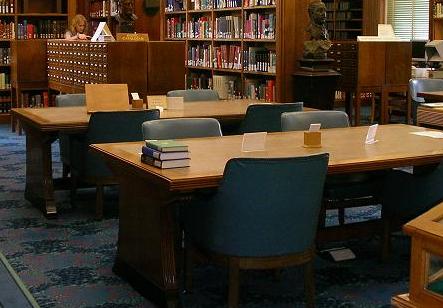What’s so special about Music?
Maybe surprisingly, the invitation to join this blog as a contributor made me re-consider what’s so special about Music. Of course, being employed within the music section I am extremely biased, and I think Music is special. But whether you agree with me or not, factually it is true: Music at the University Library is part of Special Collections, but why? One can crudely group the sections which form Special Collections at the UL as follows:
Languages using non-Western scripts:
Chinese, Indian, Japanese, Near and Middle Eastern
Unique and significant collections (including project groups):
Bible Society, Darwin Correspondence Project, Manuscripts & University Archives, Rare Books, Royal Commonwealth Society, Taylor-Schechter Genizah Research Unit
If you wholeheartedly agree with the above compartmentalisation, you might be in for a bit of a surprise. I don’t think it’s that clear-cut at all!
Rather, say, the Chinese Collections contain, amongst many unique items and significant collections, also a collection of Chinese Oracle Bones; of course that’s not only unique, but also conveying information in a special format. The Bible Society’s holdings contain 500 manuscripts in 184 languages: so they don’t only have printed books (format!), but also there are items in languages which do not use Western scripts (not least some items in Hebrew). Finally, Rare Books does obviously contain unique and rare items, but also, for example, “non-books”, such as the E.H.L. Jennings portrait collection which consists of around 100,000 portraits.
So how does Music fit into all this? Unusually for the UL, we classify books, and order, process and catalogue all printed sheet music, and create catalogue records for archival and manuscripts materials which will then be held at the Manuscripts & University Archive department. We also have a sizeable rare books collection within Music, and have a number of composers’ archives (with their music manuscripts and other archival materials, as they are still in the process of being catalogued and processed). The only three ‘formats’ relating to music we do not get involved with are periodicals, e-resources and microfilms.
We have our own reading room, the Anderson Reading Room, which not all of the Special Collections have. We are also the first UL department to have a Head and Deputy Head who each work 50% at the UL and the Faculty of Music’s Library (Pendlebury Library of Music): currently this is a 3-year arrangement, which is commonly referred to as the ‘Music Pilot’. I don’t know whether that convinces you that we are ‘special’ enough to be part of Special Collections, but with all of the above, it is “good enough” for me.



Surely music is also another language, using various non-language scripts. There are also unique and significant collections of musicians archives (which, though housed in the MSS dept., are usually acquired and documented by the Music Department), some old, like the extraordinary collection of lute manuscripts of Mathew Holmes in the early 17th century, and several modern archives of composers such as Alwyn, Bliss and Gerhard.
I couldn’t agree more. The above was _not_ meant to give an all-encompassing reasoning for Music at the UL being “special”. I’m sorry if the overall gist of my post wasn’t clear, but I really only wanted to point out that there is more than just the bare facts for _any_ of the collection and project areas which come under Special Collections, to be thought of as ‘special’. Like Maps it is fairly special in as much as having its own reading room – due to both having “weird formats”.
So, Music is “special”, as in part of Special Collections, but not in terms of being unique for ticking various criteria within the areas in SC – others can “do so too”; so Music is ‘nothing special’ compared to other areas of Special Collections – as _all_ areas have their treasures, quirky items as well as rare and unique items, etc. Most importantly: though the boundaries seem clear, there is a lot of “cross-over” between various areas and reading rooms within Special Collections.
I have planned at least one blog post for pointing to some of the music items which are outside the Music Department at the UL to illustrate this.